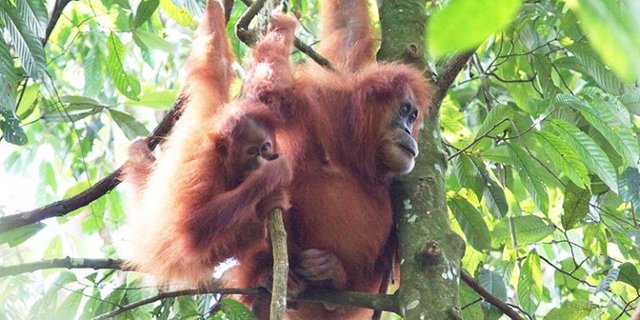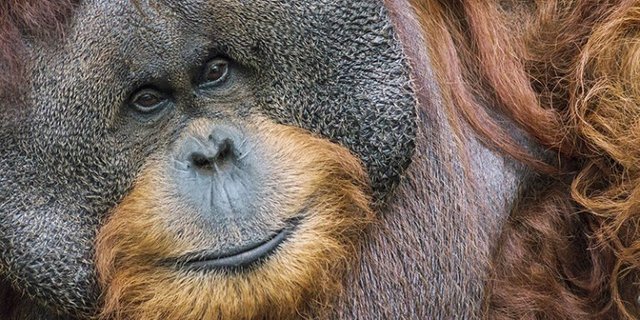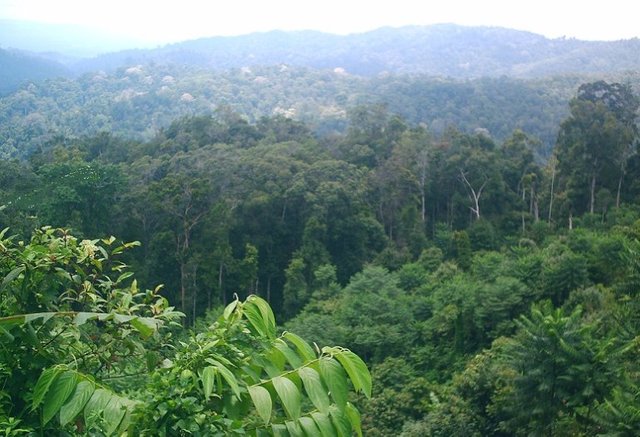Orangutan: Taxonomy, Food, Habitat and Conservation Efforts
Orangutans are living creatures belonging to primates and are one of the great apes that are still alive today. The term orang utan itself is actually derived from Malay meaning human being living in the forest.
These primates are classified into two sub-species of Kalimantanan orangutan (Pongo pygmaeus) and Sumatran orangutans (Pongo abelii). Although very similar, these two species have some differences. These differences will be presented in this exclusive paper.
This primate is already included in the category Critically Endangered or already very endangered it has some unique facts that need to be known.

Orangutans and Deforestation
Deforestation is a process of reducing or diverting forest into areas that are used for other purposes outside the forestry sector, such as oil palm plantations, settlements and so on.
One of the negative impacts of deforestation is the depletion of orangutans habitat or dwellings. If deforestation continues without any control or control, deforestation will threaten the survival of this species in its natural habitat, the forest.
Taxonomy
Criteria Description
Kingdom; Animalia.
Sub Kingdom; Metazoa.
Phylum; Chordata.
Class; Mammals.
Order; Primates.
Family; Hominidae.
Genus; Pongo.
Species; Pongopygmaeus, Linne.
Sub-species: Pongo pygmaeus.
Pongo abelii.
The Morphology of Orangutans

The photo above is one of the sub-species of orang-utan originating from Borneo. There are some prominent differences between Sumatran orangutans and Bornean orangutans.
When viewed at a glance, the morphology of the Kalimantan orangutan (Pongo pygmaeus) and the Sumatran orangutan (Pongo abelii) looks very similar. Morphologically, these two species can be distinguished by their fur color.
In general, Sumatran orangutans (Pongo abelii) have a more pale feather color and feel soft and more dense when held. The Bornean Orang Utan (Pongo pygmaeus) has a reddish-brown fur color especially when grown. The fur of the Bornean orangutans is rough and rarely or not as extravagant as the feathers of Sumatran orangutans.
The hip bone of this primate species undergoes rudimentation or physical changes of the limbs that cause it as if it has no waist. The condition of the belly of the bulge and the very short neck that it generally has increasingly makes the impression that this species does not have waist. This undeveloped hip bone allows these primates to cling and rotate to 180 degrees.
The difference between Sumatan orangutans and other Bornean orangutans lies in the shape of the face. The Sumatran orangutans (Pongo abelii) have a flatter face with few weak glands. The advance face of Sumatran orangutan is different from the shape of the face of the Kalimantan orang utan (Pongo pygmaeus) which is widened because it contains a lot of fat tissue.
Species of adult male orangutans have twice the size of the body of the female orangutans so that their weight is different. In general, the weight of pet orangutans is bigger / fatter than those living in the wild.
Male orangutans have a voice pocket that serves to make a long sound or call. Usually this is done when they want to communicate with each other especially when there is interference. The male primate species also passed long calls to stimulate female sex during the mating period.
Food
The main activities of orangutans are feeding which is usually done in the canopy of trees or on the part of trees that there are many fruits that is at an altitude of 10-30 meters. Because orangutans like to eat it is no wonder if most of these species have a distended stomach and run slow or lazy impressed.
Orangutans are included in frugivorous animals that are fruits eaters. In addition to fruits, in certain circumstances these animals also eat leaves, epiphytic plant flowers, bark of a particular tree, and termites.
Fruit is the staple food of orangutans. Based on available data, the composition of percentage of meal time and the type of food that is fruit (60%); leaves (25%); bark of trees / stems (15%); insects (10%) and others (2%).
Orangutans also like honey as food. Usually this species look for leafy branches to cover his face to take honey in the honeycomb.
Breeding
Female orangutans are said to be adults when they start from 10 to 12 years old, while males are said to be adults when they begin to be 8 years old. Orangutans that live freely in nature begin pregnant and give birth to the first baby at the age of 9-12 years, the condition is different from the first pet orangutans usually at the age of 7-8 years.
Species of female orangutans experienced a period of pregnancy for 9 months. According to Wardiningsih and Noprianto female orangutans can give birth 2 to 4 times with a birth distance of 3-5 years and even more than 5 years.
This primate breeding is long or requires a longer time when compared to other primates.
Habitat

In general, primate habitat is located in lowland primary forests up to highland forests or mountains with a height of 1000 mdpl. Orangutan habitat is a forest dominated by plants from the Dipterocarpaceae family. The condition is related to the characteristics of these primates which are aboreal animals or animals whose activities are carried out on trees.
This species is more commonly found around small or large rivers and near swamps in the forest.
In its natural habitat, these primates make a nest for sleeping, mating, childbirth, and parenting until they are ready to be weaned. In general, these animals make nests on top of trees that provide a wider view of most forest areas.
According to Rijksen, there are several stages that made orangutans to make a nest that is:
- Rimming (Rounding)
The limbs are horizontally curved to form a circle of nests and retained by using other crosses.
- Hanging (Hanging)
The limbs are bent into the nest to make a bowl of nest.
- Pillaring (Support)
The boughs are bent down the nest to support the nest circle and provide extra strength as a nest support.
- Loose (Release)
Some branches are cut from the tree and placed into the base of the nest as a base or at the top of the nest as a nest roof. The broken branches are obtained from the surrounding vegetation.
Unique Facts Orangutans
Orangutans have some unique facts:
- Orangutans include smart primates.
Orangutans include intelligent primates who can use the baton very well to take their food, especially the fruits that are on the tree. In addition, these animals can also use a wide-sized leaves to protect it from the sun or rain.
- Male species can make long calls.
Long appeals by orangutans can be heard within a radius of 1 km. This long call can be done by orangutans because it has a pocket of voice in his throat.
- The largest male species has a range of arms reaching 2.3 meters.
These primates have long arms and are even longer than other primates. This long arm is used for the daily activities of orangutans living arboreally.
- Very much like sleeping.
Not only sleep long at night, orangutans usually also take a nap on the sidelines of its activities. For the sake of comfort sleep, these animals usually make the mattress to sleep in the nest from the branches around the nest.
- Has a very close kinship with humans.
Orangutans have a level of DNA similarity of 96.4% with humans so it can be said that orangutans and humans have a very close kinship.
- Including strong animals.
Orangutans have a six-fold strength of the power that adult humans possess. The bites are also very strong. Nonetheless, orangutans are considered harmless because of their calm nature.
Status of Scarcity
International Union for Conservation Nature (IUCN) raises the status of the Borneo orangutans (Pongo pygmaeus) to Critically Endangered after being declared Endangered. The IUCN decision is based on the population of Borneo orangutans that have declined steadily in recent decades. In addition, other considerations are the increasingly widespread illegal hunting of Kalimantan orangutans in Indonesia and Malaysia and the habitat of these animals are increasingly degraded (National Geographic Indonesia 2016).
The conservation status of the Kalimantan orangutan is similar to Sumatran orangutan conservation status. According to the International Union for Conservation Nature (IUCN) in the 2002 edition of the Red List, the Sumatran orangutan (Pongo abelii) is also categorized as Critically Endangered or critically endangered (WWF).
Based on IUCN's data, during the last 75 years the Sumatran orang-utan population has declined by 80%. This condition occurs because the habitat of orangutans continues to decline due to deforestation.
The conservation status of the Kalimantan orangutans and the Sumatran orang-utans shows that these primate populations face a very high risk of extinction in the near future.
Conservation Efforts
Conservation efforts on the population of Kalimantan orangutans and Sumatran orang-utans continue to be done by various parties to prevent the decline of the population.
Ministry of Environment, Ministry of Public Works and Ministry of Forestry in developing the Spatial Plan Based on Ecosystem of Sumatra Island assisted by World Wide Fund for Nature (WWF) Indonesia. The spatial planning is done as one of the efforts to save or restore the remaining forest in Sumatra.
WWF Indonesia is also working with various parties to protect the forest landscape in Bukit Tiga Puluh and Jambi which is an area of Sumatran orangutan introduction in nature.
Conservation efforts are also undertaken by WWF to Kalimantan orangutans, namely:
Facilitate the creation of a network of protected areas such as a carefully managed animal corridor ensuring that orangutans are able to move freely within it. Ensure that all other areas within and within the boundaries of the Heart of Borneo whose status is not protected can be maintained just like a forest area which is managed sustainably because it is estimated that 70% of orangutan's inhabitants of Kalimantan are estimated to be outside protected areas. Implement orangutan conspiracy awareness campaigns to community groups.
Efforts orangutan conservation is not only done by one party, but also needs to be done by various parties.
The government should conduct counseling to the community, especially the parents to generate awareness of the importance of protecting orangutans so that knowledge can be passed on to their offspring in future generations.
Early childhood conservation education should also be done in a fun and easy to understand way for children to know and know and love orangutans.
Efforts to conserve orangutans are also done by improving and preserving their habitat because orangutans prefer to live in the wild instead of in captivity or in the zoo. Efforts to prevent the destruction of orangutan habitat must be done immediately.
Why should orangutans be preserved?
Basically there are various reasons related to the importance of orangutans to be preserved. In summary, the reason orangutans need to be preserved is because of the existence or role of orangutans is very large for the forest, environment, nature and for humans.
Orangutans are known as umbrella creatures or umbrella species. This is because orangutans have an important role in maintaining the diversity of the species on the face of the earth, maintaining the ecosystem's ecosystem and playing a major role in regenerating forest and the diversity of wild plant species in the forest.
Orangutans play an important role in forest regeneration. Orangutans play a role in the distribution of grains derived from fruits as their diet. The spread of seeds from the fruit they eat will lead to increased tree growth so that the balance of nature is maintained.
One of the uniqueness of orangutans is to cure or cure their own diseases by eating fruits or other plants in the forest. If this is further investigated by the researchers then will be found orat-obat for certain diseases. Conservation efforts or orangutan conservation needs to be done to allow a longer time for researchers to conduct this research.
Reference:
Ginting Y W S B. 2006. Study on the reintroduction of Sumatran orangutans (Pongo pygmaeus abelii Lesson 1827) developed at Jambi Reintroduction Station [thesis]. Bogor (ID): Faculty of Forestry IPB.
Noprianto A. 2004. Study on the management of orangutans (Pongo pygmaeus pygmaeus, L) at Ragunan Zoo Jakarta [thesis]. Bogor (ID): Faculty of Forestry IPB.
Suwandi A. 2000. Characteristic of orang utan lodge (Pongo pygmaeus, Linne 1760) in camp leakey of Tanjung Putting National Park of Central Kalimantan [thesis]. Bogor (ID): Faculty of Forestry IPB.